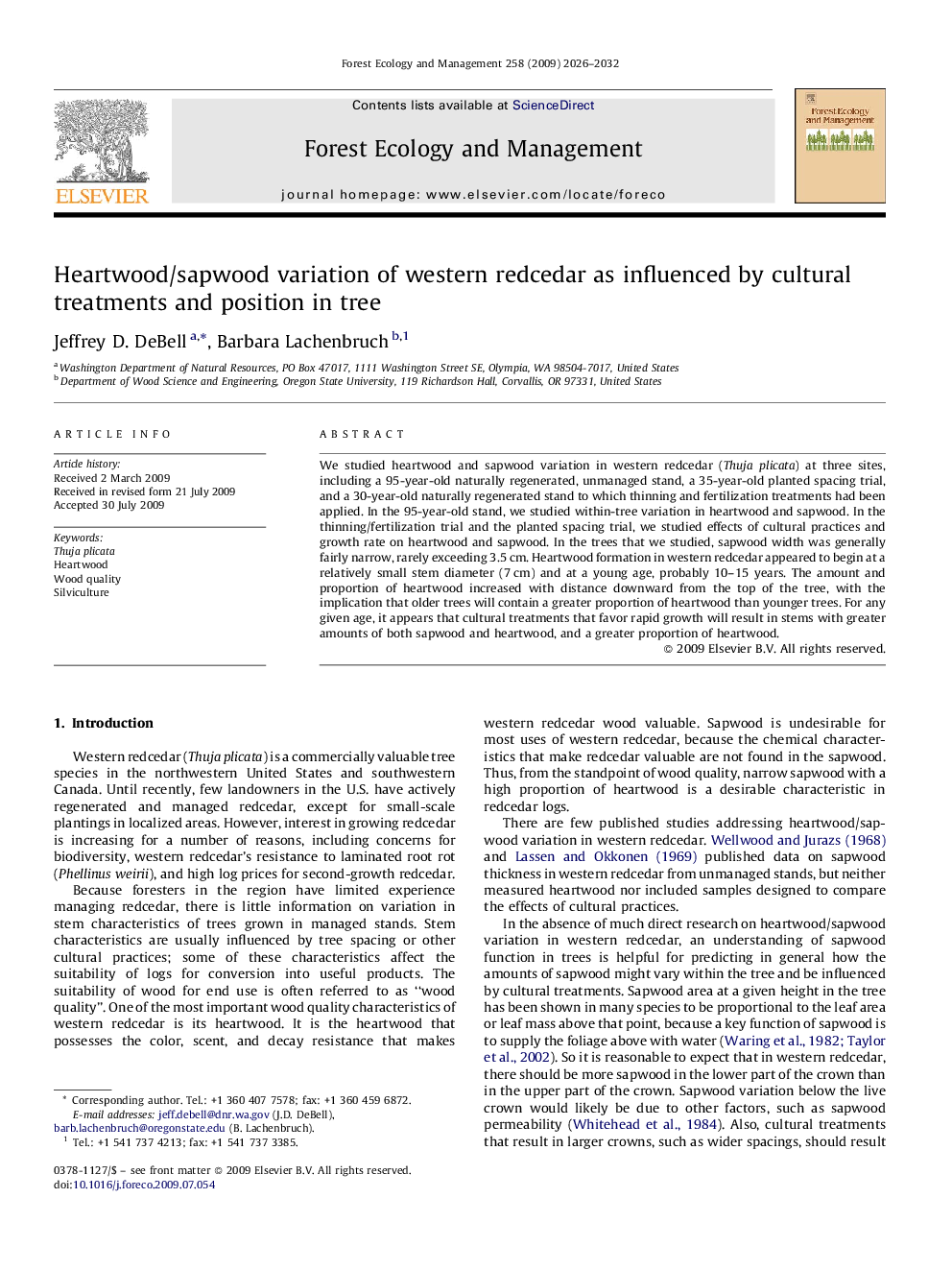| Article ID | Journal | Published Year | Pages | File Type |
|---|---|---|---|---|
| 88563 | Forest Ecology and Management | 2009 | 7 Pages |
We studied heartwood and sapwood variation in western redcedar (Thuja plicata) at three sites, including a 95-year-old naturally regenerated, unmanaged stand, a 35-year-old planted spacing trial, and a 30-year-old naturally regenerated stand to which thinning and fertilization treatments had been applied. In the 95-year-old stand, we studied within-tree variation in heartwood and sapwood. In the thinning/fertilization trial and the planted spacing trial, we studied effects of cultural practices and growth rate on heartwood and sapwood. In the trees that we studied, sapwood width was generally fairly narrow, rarely exceeding 3.5 cm. Heartwood formation in western redcedar appeared to begin at a relatively small stem diameter (7 cm) and at a young age, probably 10–15 years. The amount and proportion of heartwood increased with distance downward from the top of the tree, with the implication that older trees will contain a greater proportion of heartwood than younger trees. For any given age, it appears that cultural treatments that favor rapid growth will result in stems with greater amounts of both sapwood and heartwood, and a greater proportion of heartwood.
